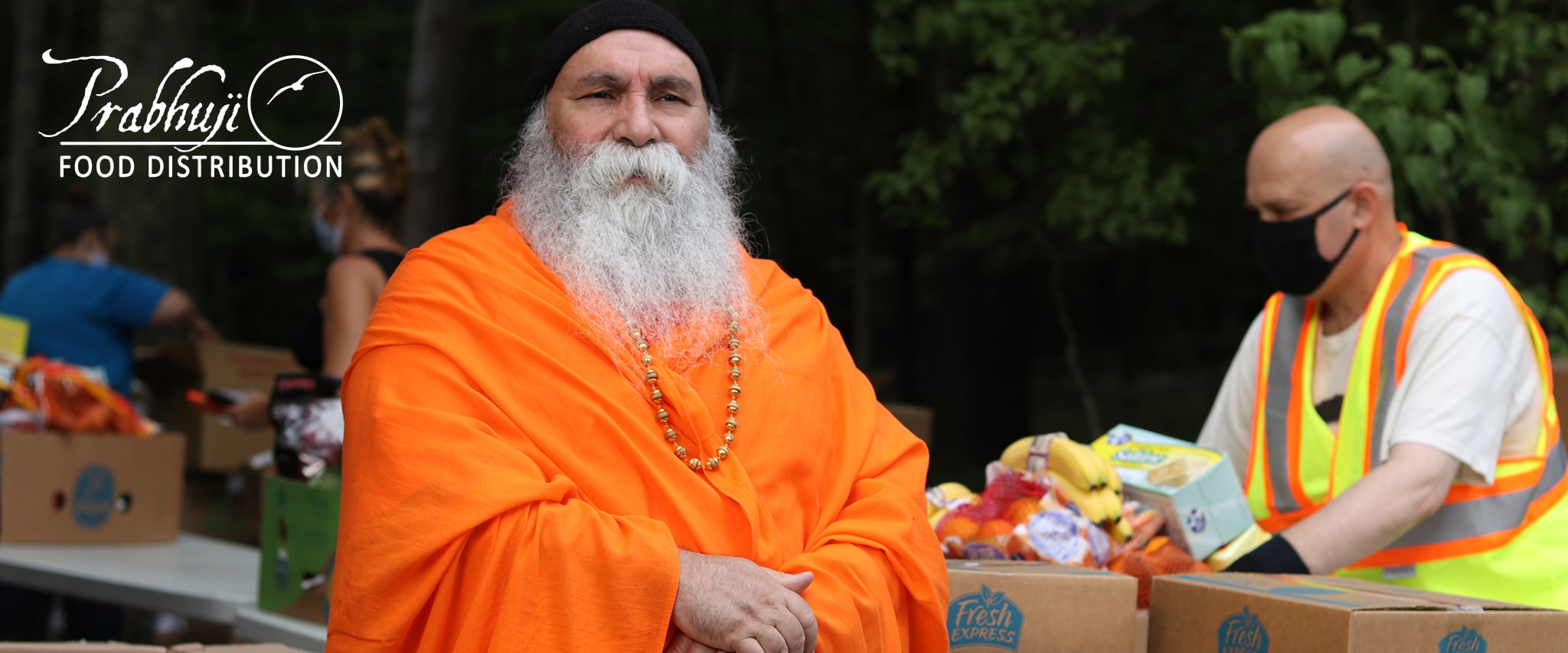
Food Rescue Program
What we do?
The Prabhuji Food Rescue Program was founded by Prabhuji in 2007 with the objective to alleviate hunger in the Greater New York State area. We are rescuing food from supermarkets and farms, and delivering it to various food pantries in New York City and Upstate NY. We strive to reduce food waste, protect the environment, and above all – provide free healthy groceries to the those that need them the most. This include, in addition to own weekly distribution, also other pantries and community centers in the area.
Food waste facts
What is food waste?
Food waste is food that is not eaten. The causes of food waste are numerous and occur during production, processing, distribution, retail and consumption. Around 14% of food produced is lost from post-harvest up to, but not including, the retail level. Out of the total food available to consumers in 2019, approximately 17% went to the waste bins of households, retailers, restaurants and other food services.
According to the Natural Resources Defense Council, Americans throw away up to 40% of food that is safe to eat.
Environmental effect:
Food waste that is not handled or reclaimed properly, i.e. through composting, can have many negative environmental consequences. For example, landfill gas from anaerobic digestion of organic matter is a major source of the greenhouse gas methane, and un-reclaimed phosphorus in food waste, leads to further phosphate mining. Additionally, reducing food waste in all parts of the food system is an important part of reducing the environmental impact of agriculture, by reducing the total amount of water, land and other resources needed to feed the global community.
Global facts:
One-third of the world’s food is thrown away. According to the United Nations, the resources used to produce this squandered food are equivalent to 3.3 billion tons of CO2 emissions and three times the volume of Lake Geneva. Food waste happens mostly at the end of the food supply chain, at the point of consumption, in industrialized nations.
U.S.A. Facts:
Estimates of food waste in the United States range from 35 million tons to 103 million tons. In a study done by National Geographic in 2014, Elizabeth Royte indicated more than 30 percent of food in the United States, valued at $162 billion annually, isn’t eaten. The University of Arizona conducted a study in 2004, which indicated that 14 to 15% of United States edible food is untouched or unopened, amounting to $43 billion worth of discarded, but edible, food. In 2010, the United States Department of Agriculture has come forth with estimations from the Economic Research Service that approximates food waste in the United States to be equivalent to 141 trillion calories.
Landfills and greenhouse gases
Dumping food waste in a landfill causes odour as it decomposes, attracts flies and vermin, and has the potential to add biological oxygen demand (BOD) to the leachate. The European Union Landfill Directive and Waste Regulations, like regulations in other countries, enjoin diverting organic wastes away from landfill disposal for these reasons. Starting in 2015, organic waste from New York City restaurants will be banned from landfills.
In countries such as the United States and the United Kingdom, food scraps constitute around 19% of the waste buried in landfills, where it biodegrades very easily and produces methane, a powerful greenhouse gas.
Methane, or CH4, is the second most prevalent greenhouse gas that is released into the air, also produced by landfills in the U.S. Although methane spends less time in the atmosphere (12 years) than CO2, it’s more efficient at trapping radiation. It is 25 times greater to impact climate change than CO2 in a 100-year period. Humans accounts over 60% of methane emissions globally.

